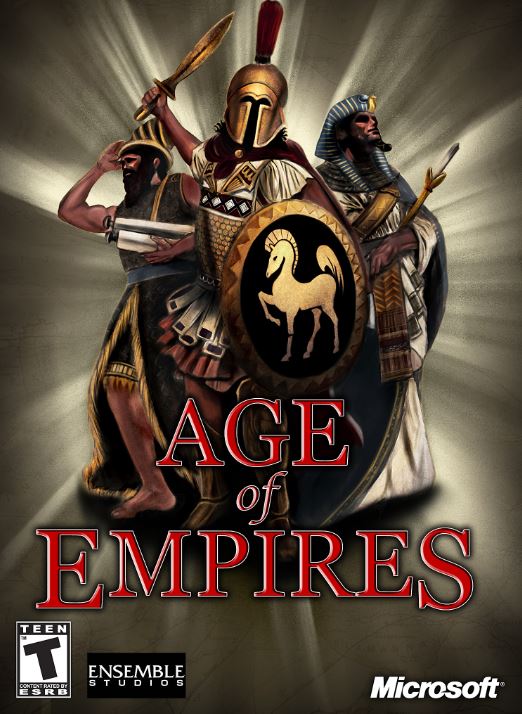The Age of Empires video game saga is one of the most iconic and recognized in the real-time strategy genre. Developed by Ensemble Studios and published by Microsoft, this saga has captivated millions of players around the world since its launch in 1997.
The Age of Empires saga focuses on the building and development of civilizations throughout different historical periods, from the Stone Age to the Imperial Age. Each installment of the saga offers players the opportunity to take control of a civilization and guide it to greatness by building cities, establishing trade and diplomatic relationships, and leading armies in epic battles.
One of the most notable features of the Age of Empires saga is its genuine focus on story. Each game in the saga is based on real historical events and cultures, allowing players to learn about different civilizations, leaders and conflicts while enjoying the gameplay experience. Additionally, the saga has been praised for its attention to detail in representing the architectural, technological and cultural characteristics of each civilization.
Since its debut, the Age of Empires saga has evolved and expanded in different installments and expansions. Each game has introduced new units, buildings and technologies, as well as improvements to graphics and performance. In addition, the saga has demonstrated its ability to adapt to technological advances, and has maintained its validity over the years with remasters and updated versions.
The Age of Empires video game saga is considered a benchmark in the real-time strategy genre and has left a lasting legacy in the video game industry. Its combination of strategic gameplay, historical immersion and production quality has made it one of the most beloved and respected sagas in the world of gaming. Without a doubt, Age of Empires will continue to be remembered and admired by generations of players to come.

The Age of Empires saga Description
The Age of Empires saga consists of four main titles: Age of Empires I, II, III, and spin-off titles.
Each game is set in a different historical period, ranging from ancient civilizations to the colonial era.
The gameplay revolves around real-time strategy, where players must gather resources, build their base, and lead their armies to victory.
One of the most notable features of the Age of Empires saga is the unique civilizations, units, and technologies for each game.
For example, Age of Empires II features civilizations such as the Byzantines, Vikings, and Mongols, each with their own strengths and weaknesses.
Gameplay mechanics and features
The Age of Empires saga is known for its complex gameplay mechanics and features:
- Resource gathering and management play a crucial role in the game, as players must collect food, wood, gold, and stone to build their civilization.
- Base building and city management are also important, as players must construct buildings and infrastructure to support their armies and economy.
- Combat and military tactics are another key aspect of the game, as players must strategically use their units and technologies to defeat their opponents.
- The Age of Empires saga has had a significant impact on the gaming industry.
It has influenced the real-time strategy genre and has inspired many other games to follow in its footsteps.
The series has also provided a unique educational experience, as players can learn about different civilizations, historical events, and cultural practices through gameplay.
The fan community and competitive scene surrounding the Age of Empires saga have also been significant, with many players still enjoying the games and participating in tournaments to this day.
Age of Empires I
Age of Empires 1 is a real-time strategy (RTS) game released in 1997 by Microsoft. The game is set in different historical periods, from the Stone Age to the Iron Age, and players are responsible for building and developing a civilization from scratch.
Players begin by selecting one of 12 available civilizations, each with their own unique features and units. As the game progresses, players must collect resources such as food, wood, and gold to build structures, train units, and upgrade their civilization.
The main objective of the game is to build and expand a base, raise an army, and fight other civilizations in strategic battles. Players can also establish alliances, negotiate with other civilizations, and explore the map for additional treasure and resources.
Age of Empires 1 offers different game modes, including solo campaigns with specific objectives, custom games and the possibility of multiplayer play over local network or internet connections.
The game is known for its focus on strategy and tactical decision-making, as well as its meticulous historical detail and advanced graphics for its time. Age of Empires 1 laid the foundation for the successful franchise and is considered one of the most influential strategy games in gaming history.
Age of Empires II
Age of Empires II is a real-time strategy game released in 1999 and developed by Ensemble Studios. The game is set in the Middle Ages and allows players to choose one of the 13 available civilizations to build and expand their empire, conquer territories, collect resources, develop technologies and combat other players or artificial intelligence.
The main objective of the game is to accumulate victory points by completing different tasks, such as constructing buildings, training military units, and exploring new territories. Players can choose to play in different modes, such as campaign mode, where you follow a story and complete different missions, or online multiplayer mode, where you can compete against other players from around the world.
Age of Empires II offers a wide variety of military units, from archers and knights to catapults and warships. Each civilization has its own special units and technologies, providing a variety of strategies and approaches to the game. Additionally, players must also manage their resources efficiently, such as wood, food, gold, and stone, to keep their economy and army running.
The game has been praised for its balanced gameplay, detailed graphics, and variety of strategic options. It has won several awards and is considered one of the best real-time strategy games of all time. Age of Empires II has also been remastered and re-released in HD in 2013, and a definitive version with improved graphics and additional content was released in 2019.
Age of Empires III
Age of Empires III is a real-time strategy video game developed by Ensemble Studios and published by Microsoft Game Studios. It was released in 2005 as the third installment of the popular Age of Empires series.
The game is set in the era of European colonization of America and allows players to control one of the eight available civilizations. The main objective is to build and expand a colony, collect resources, train and deploy a powerful army, and conquer other territories.
Age of Empires III introduces new features compared to previous games in the series. One of them is the deck card system, which allows players to request upgrades, resources or special units through cards that are earned and strategically selected during the game. Additionally, the game features a deeper unit technology and skill tree that allows players to customize their strategies and tactics.
The game mode offers different single-player campaigns, based on the history of different civilizations, and also features online multiplayer game modes where players can compete against other players from around the world.
Age of Empires III received mostly positive reviews from critics and fans. It was praised for its gameplay, improved graphics, and the addition of new tactical features. The game also received later expansions, which added new civilizations and additional content.
In short, Age of Empires III is a real-time strategy game that transports you to the time of European colonization of America, where you must build and expand a colony, train a powerful army and conquer other territories. It is known for its exciting gameplay, improved graphics and new tactical features.
Other Age of Empires sequels
In addition to Age of Empires, Age of Empires II, and Age of Empires III, there are a few other sequels and spin-offs within the Age of Empires franchise. Here are some examples:
Age of Mythology: Developed by Ensemble Studios and released in 2002, Age of Mythology is a spin-off of Age of Empires that focuses on mythology and classical civilizations rather than history. The game features three different pantheons (Greek, Norse, and Egyptian) with unique divine units and powers.
Age of Empires Online: Released in 2011, Age of Empires Online is a free-to-play online strategy game that moves away from the traditional Age of Empires style of gameplay and focuses more on role-playing and progression elements. However, the game shut down its servers in 2014.
Age of Empires: Castle Siege: Developed by Smoking Gun Interactive and released in 2014, Age of Empires: Castle Siege is a real-time strategy game for mobile devices and Windows 8. It focuses on building and defending medieval castles.
It is important to note that some titles or expansions may contain exclusive content for certain operating systems or devices. It is advisable to check the compatibility and availability of each game before making a purchase.
Conclusion
The Age of Empires saga has become a beloved series in the gaming industry, with its historical-based real-time strategy gameplay, unique civilizations, and complex mechanics.
The impact and legacy of the series have been significant, with its influence on the real-time strategy genre, cultural and historical education through gameplay, and dedicated fan community. The Age of Empires saga will undoubtedly continue to be a staple in the gaming industry for years to come.

